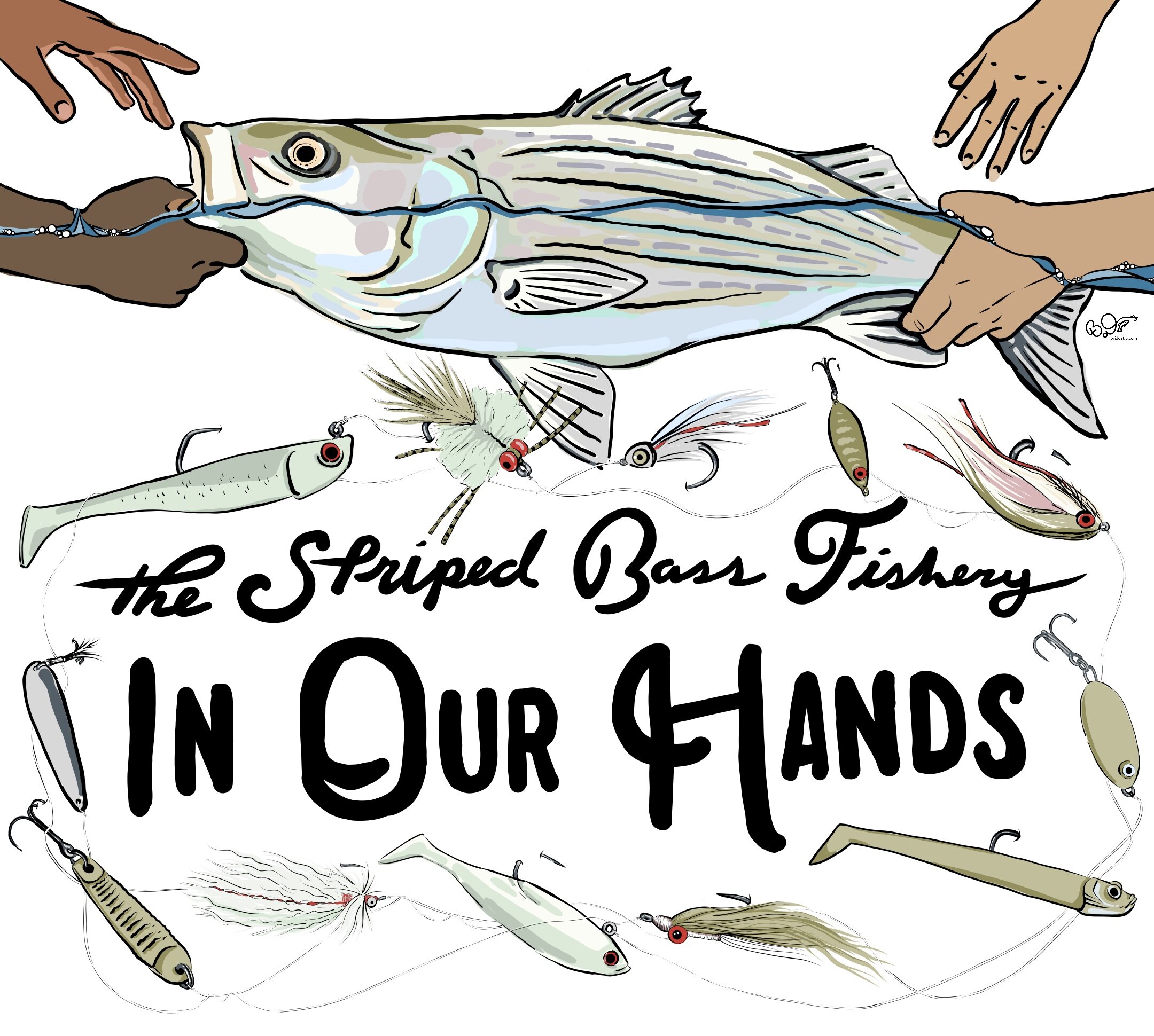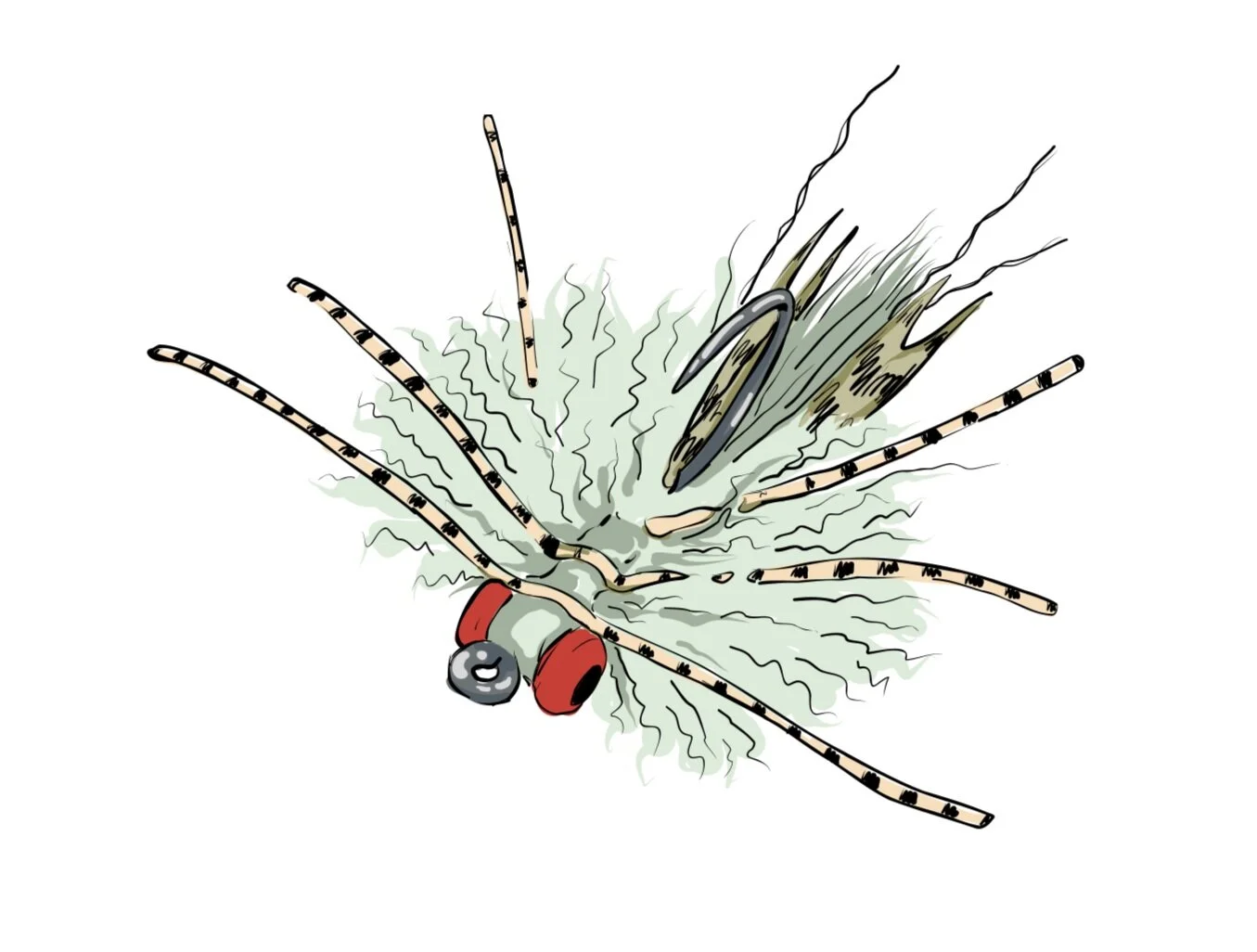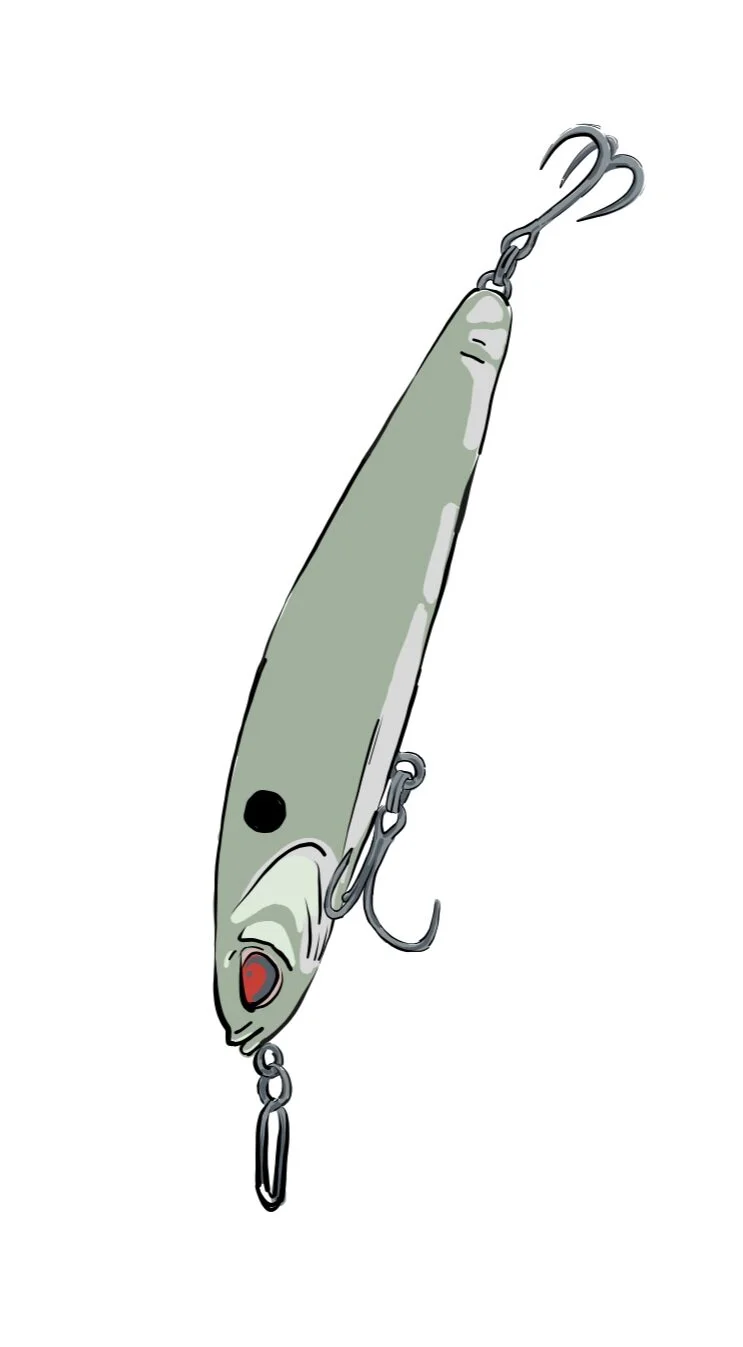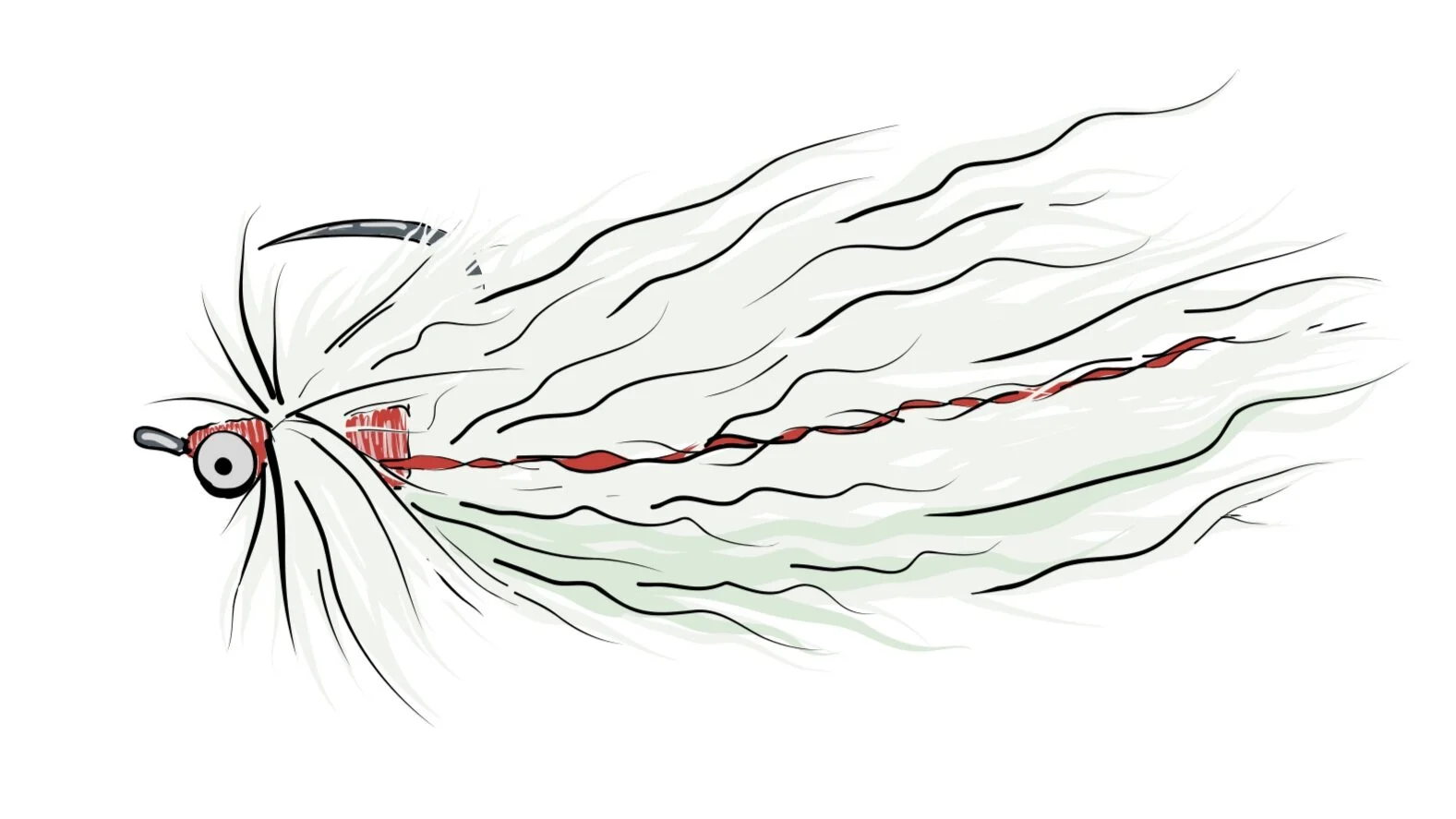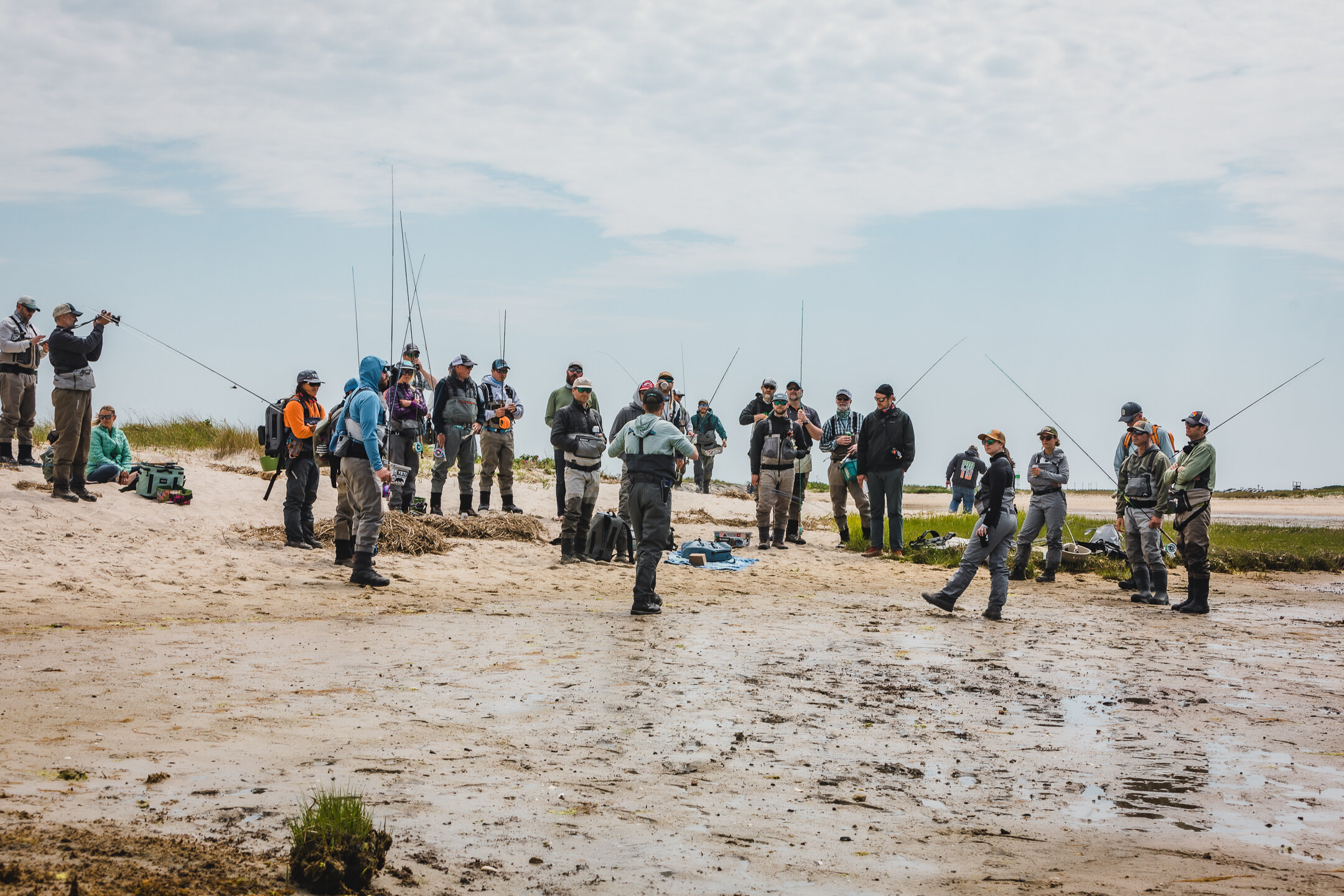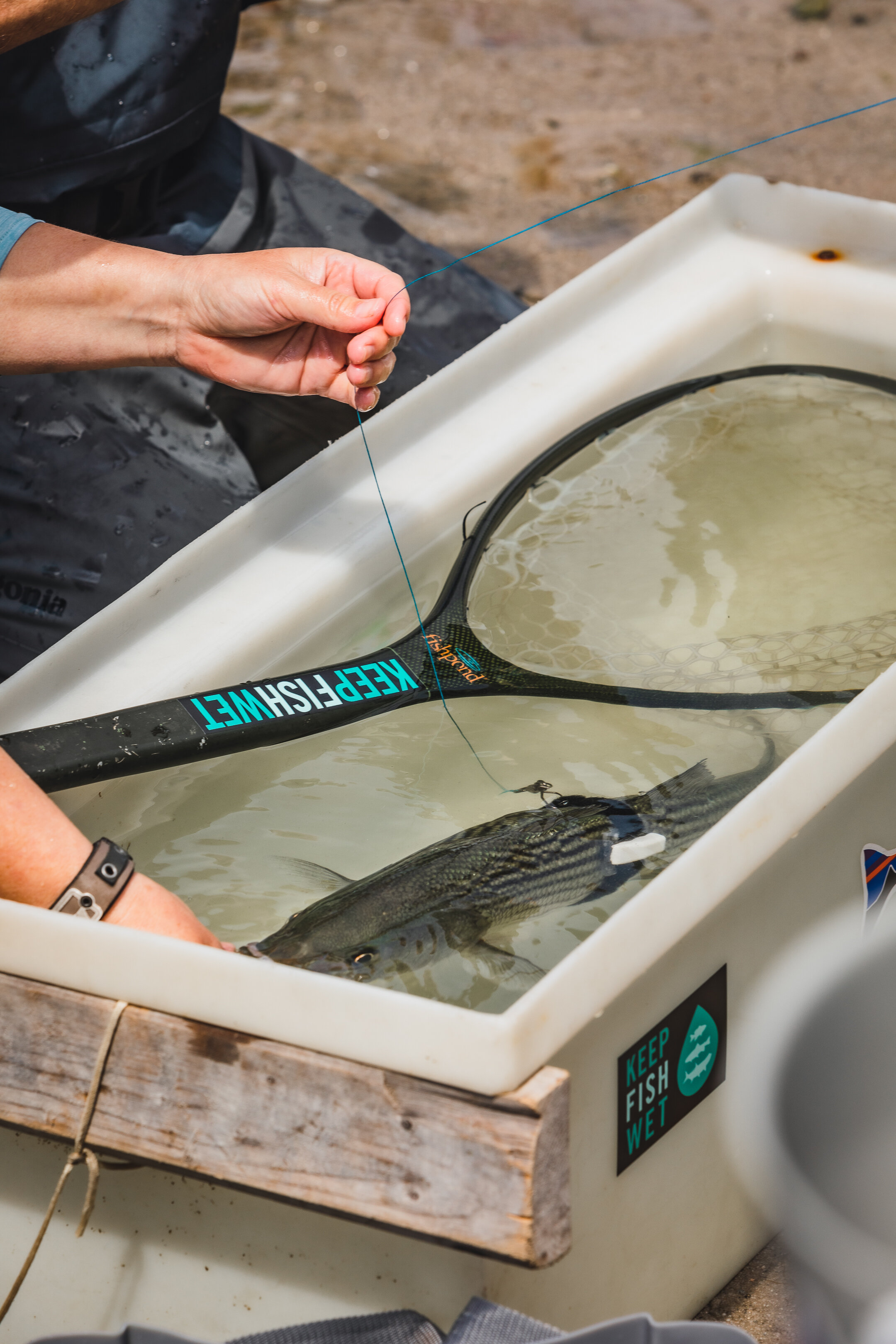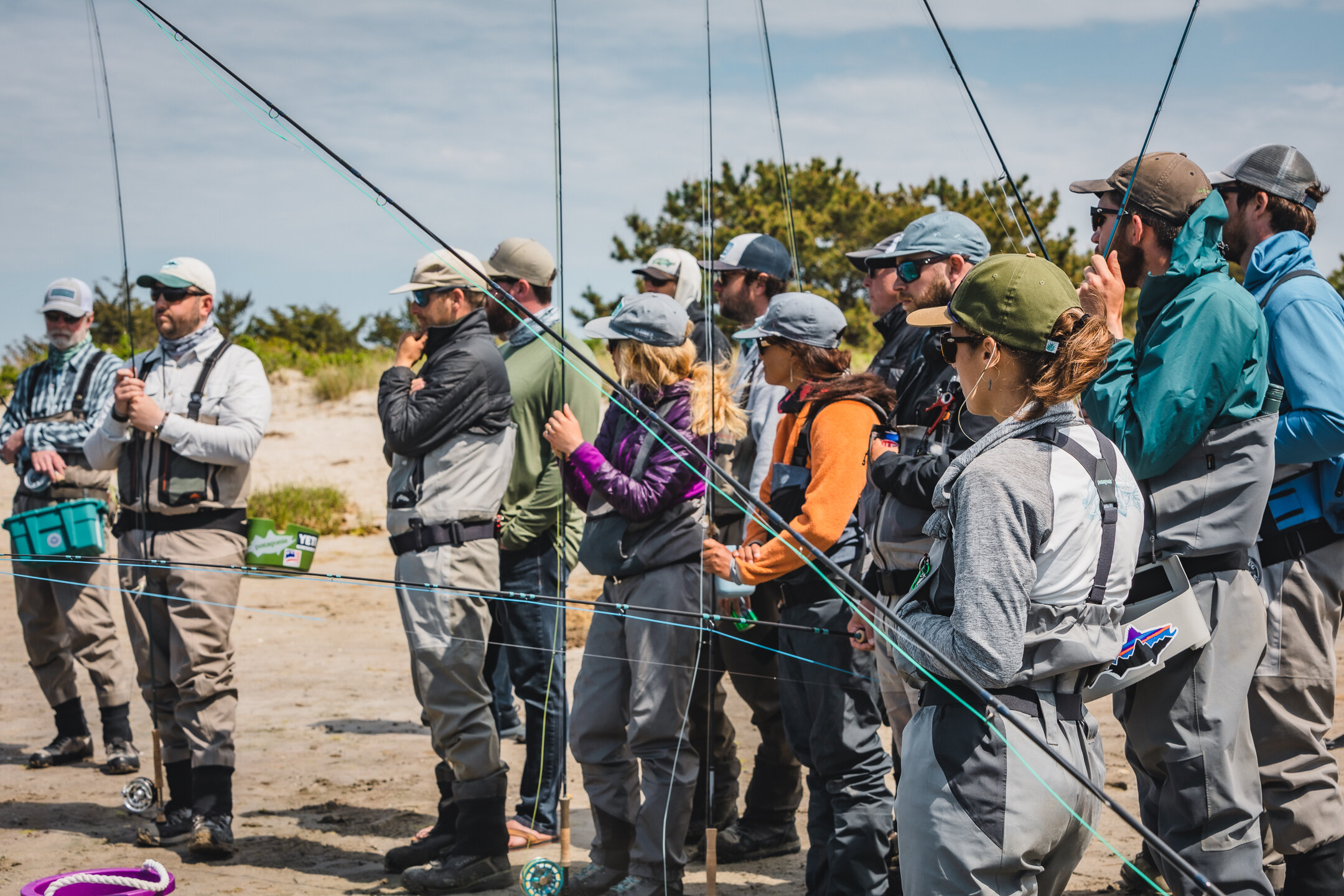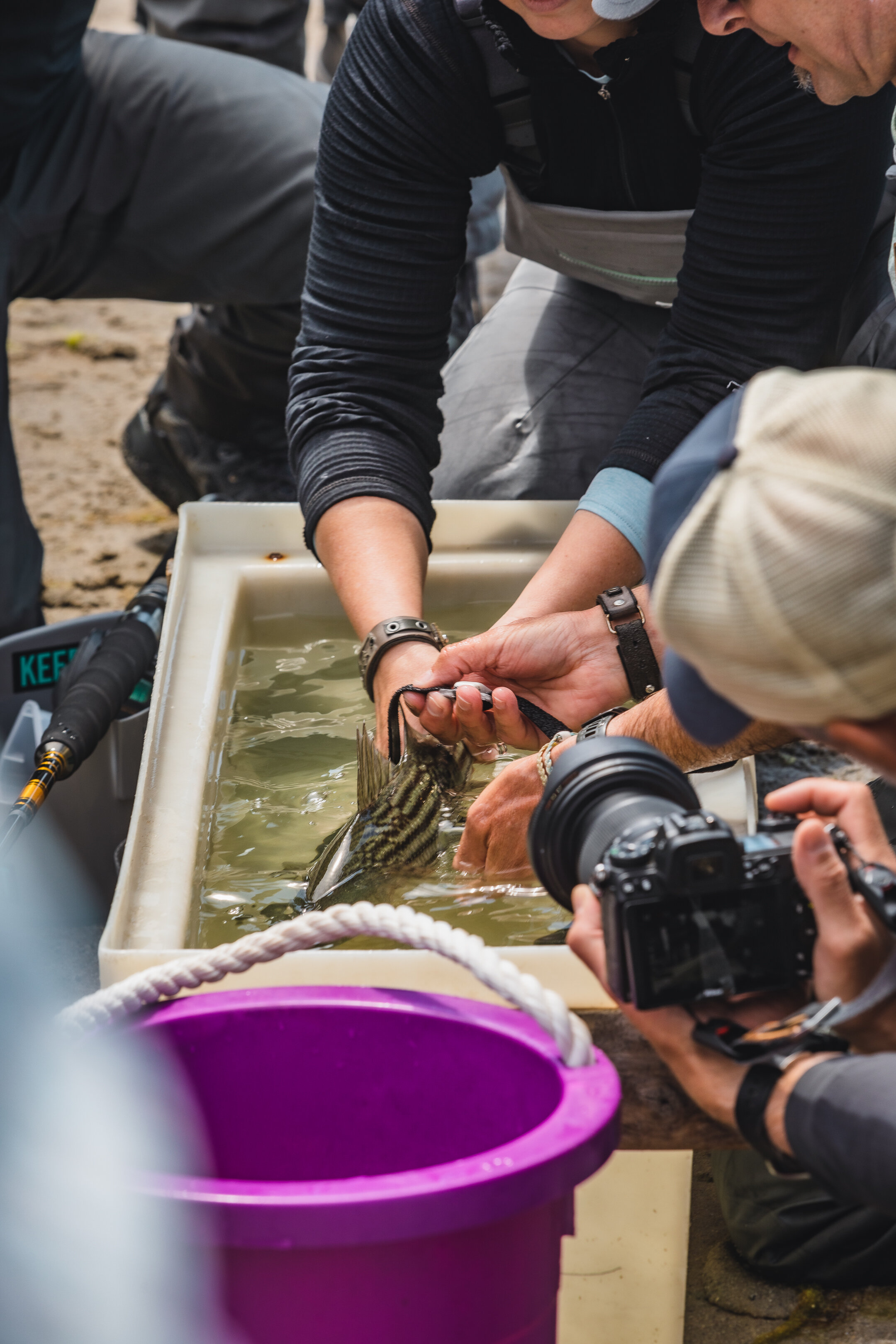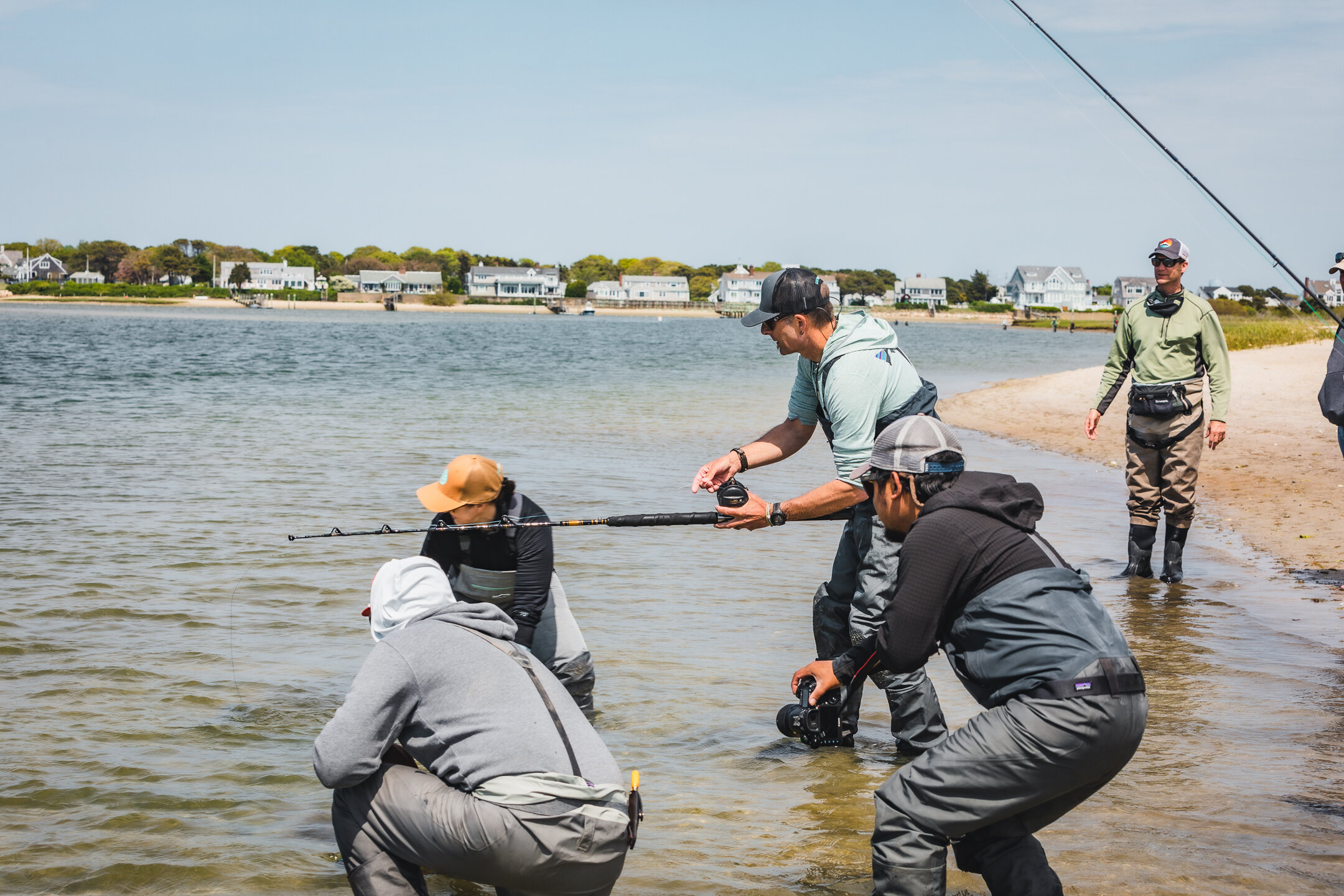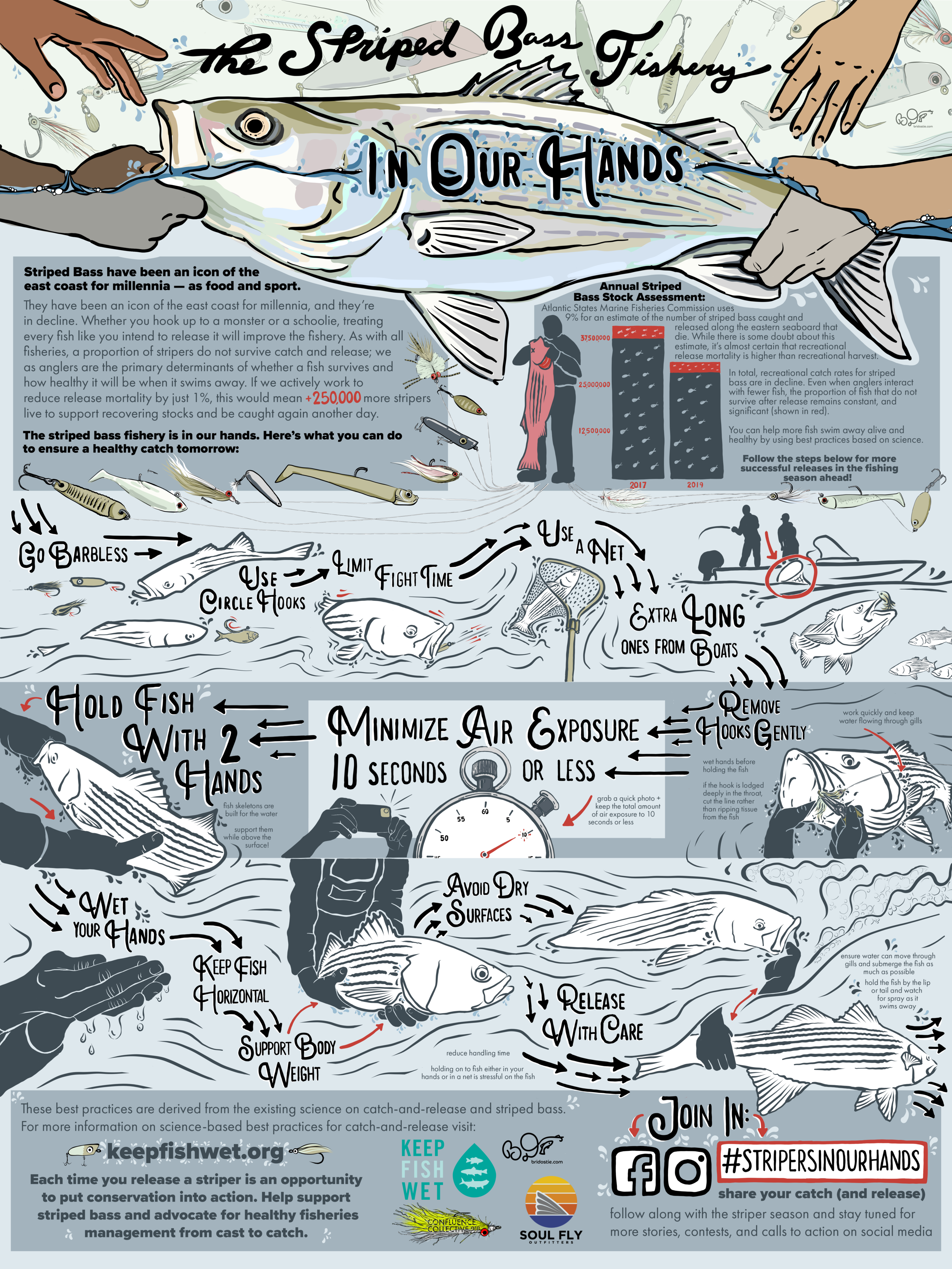Over the spring months, I’ve been counting down to the striper migration up the Atlantic coastline. It’s hard not to: these fish put more bend in a 9wt than I ever expect after months of tiny rods through holes in the ice followed by spring trout. As my first few casts slap the water and I make adjustments to throwing more weight around, casting into the ocean tends to feel like a lost cause — until that first fish. It’s like meeting up with an old pen pal, giving them a huge hug, and laughing at the prospect of summer fun ahead in each other’s company.
Thankfully, I had an excuse to chase that feeling a bit more vividly through a collaborative project with Keep Fish Wet and Maine saltwater guide on the salt, Kyle Schaefer.
I was invited to join collaborators down in Cape Cod at the end of May for the schoolie tournament, which felt like pre-season for summer stripers. Coming together as a group connected only by Zoom for so long, and getting to finally see each other for a few days of fishing? Pretty great. Even better because we could see our work take shape, and get outside eyes on the project. Suddenly, days — weeks— obsessing behind screens became stickers, posters, websites, social campaign materials, and moments of connection between anglers.
There have been many projects and initiatives happening behind screens, and surely I’m far from alone in this. To finally see things come together AND be able to see each other in person was overwhelming. It definitely made things feel “real”. It was that first fish moment, and the promise of more swimming just offshore.
A view off Cape Cod looking out over tidal flats, clouds overhead as a reminder of a cloudburst that has just passed
The focus now is to get this work out into the world. With science-based best practices coming from fisheries scientists themselves (without expensive + restrictive academic paywalls) the hope is to empower every angler with the information they need to have positive impact on the fishery as a whole. The striped bass fishery is at a 25 year low, which is daunting to imagine. Like many problems we face in our world today, issues run deep with systemic and institutional harm — it can feel helpless as an individual to move the needle of change. But we can’t individually solve the big problems; collective action can get us closer, and we can all contribute to that in a meaningful way.
The Stripers In Our Hands campaign brings people together through connection to the fishery, may that be through fly fishing, spin casting, or any other form of angling that targets stripers. It’s for people who fish for keeps, and those who practice catch and release. It’s for people who have caught hundreds of fish, as well as those preparing for their first catch. At the root of this campaign, it’s about access to information that can help us each make the most of every interaction we have with the fish; thoughtful actions, intentional movements, and recognizing that we can manage impact by knowing what a fish needs to swim away healthy.
A collection of photos shared by Clinchy Creative after the Cheeky Schoolie Tournament. A group of anglers and industry leaders joined on the beach to hear from Sascha Clark Danylchuk + Andy Danylchuk on accelerometer tracking of fish movements post-release, providing important data markers of fish health + strength after handling.
The campaign will build over this summer and likely into autumn. Members of community and fishing industry are encouraged to spread the word far and wide, and with a goal of reducing catch and release mortality by just 1% we can increase the striped bass population by 250,000—280,000. We can do that, right?
Check out the full campaign webpage here, and dig into the fisheries data here.
The completed infographic is available with public access rights. Industry and fishery professionals are encouraged to share with clients and colleagues, and individual anglers are welcome to reference this in their own communities.
